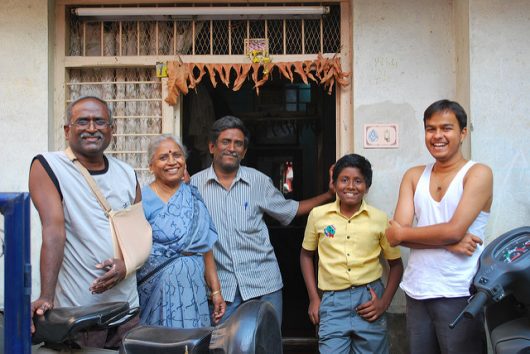10 Extremely Relevant Facts About Poverty in Bangalore

Bangalore (officially called Bengaluru) is the capital city of the state of Karnataka in India. Bangalore is known as the fastest-growing city in India and India’s “Silicon Valley.” The rapid growth of Information Technology (IT) and business process outsourcing (BPO) has marked the city with the global economy. With massive growth comes a downside: one-fifth of Bangalore’s population lives in slums.
In 2017, Bangalore had an estimated population of 12.34 million and nearly 25 percent of this population live in slum areas. A rapid shortage of housing and increased demand for manpower in the city has led to the growth and emergence of slums in Bangalore. Here are 10 facts about poverty in Bangalore.
10 Facts About Poverty in Bangalore
- A study titled, “Slums and Urban Welfare in Karnataka’s Development” notes that twenty percent of the city’s population, or around 2.2 million people, live in slums.
- The number of slums in Bangalore has grown from 159 in 1971, to over 2000 slums (notified and non-notified) in 2015. Those living in slums accounted for just over 10 percent of the city’s population in 1971 and an estimated 25 to 35 percent in 2015.
- Per the survey conducted by Karnataka Slum Development Board 2011, there are 2,804 slum areas in the state; out of which, 597 slum areas are in Bangalore City. It is estimated that the population of the slums in the state is about 40.50 lakhs, which works out to 22.56 percent of the state’s urban population.
- According to the 2007 Karnataka Development Report, Karnataka emerged as a leader in foreign investment, being among the three largest recipients of foreign direct investment (FDI) among Indian states. Despite being the largest recipient of FDI, Karnataka has seen growing unemployment, larger numbers to the unorganized work-force and deepening urban poverty.
- In Bangalore, nearly one million poor live in slums, and about one-third of slum dwellers fall below the poverty line, with a monthly income of less than Rs 2500 ($55).
- The poor in Bangalore live in various habitations and spaces: notified slums, (the government is responsible for providing some basic services to notified slums), non-notified slums, temporary squatter colonies, pavements and railway stations or labor camps that are temporary shelters provided by builders to migrant construction workers.
- According to a 2017 study, the median household size in the slums of Bangalore is five and 25 percent of the families have a household size of up to 4 members; 75 percent of the slum dwellers have a household size of up to 6 members. The monthly median income of slum dwellers in Bangalore is around 3,000 INR ($47).
- A survey conducted by NGO Fields of View (FoV) showed that more than 70 percent of the families in slums live in debt and are trapped in slums with nowhere to go. The study shows that nearly 80 percent of slum dwellers are from the socio-economically deprived Scheduled Caste and Scheduled Tribe communities, while 11 percent are from forward castes.
- The erosion of traditional industries (such as textiles), the decline of the public sector and small-scale industries sector created the urban poor as they lost industrial employment. The rapid expansion of the construction industry and of the almost 100 percent export-oriented, ready-made garment industry, has provided employment to large numbers of poor migrants seeking a living in the city; this “provision,” though, comes with low wages and poor working conditions.
- According to the study, it is said that a large number of jobs are now available as drivers of cars and vans run by BPOs and call centers; fleets of rental taxis which serve the new international airport; security and maintenance personnel in malls and supermarkets; low-end jobs in taxi/travel agencies (office boys); and waiters and other support staff in the expanding hospitality industry. Slum dwellers in Bangalore are employed in a wide range of economic activities in the services (auto/bicycle repairing, small eateries, auto-rikshaw driving, head load bearing, domestic work) or in self-employment (pushcart vendors, street side/traffic light sellers, rag pickers and so on).
Room for Improvement
The Karnataka Slum Development Board (KSDB) has succeeded in constructing around 70,000 dwellings for slum-dwellers across the state and 5,000 shelters for people living in slums in Bengaluru. A study indicates that the local activist groups have been somewhat successful in forcing the Government to address issues of housing and other basic amenities. However, for slum residents, government housing projects invariably end up in merely “putting a roof over their poverty.”
As illustrated by these 10 facts about poverty in Bangalore, the rich becoming richer and the poor becoming poorer is a common phenomenon seen in Bangalore. However, ensuring housing is given at low-interest loans, rather than having to fall back on moneylenders, is “one way to improve their standards of living,” said Bharath Palavalli from FoV to The Hindu.
– Preethi Ravi
Photo: Flickr
